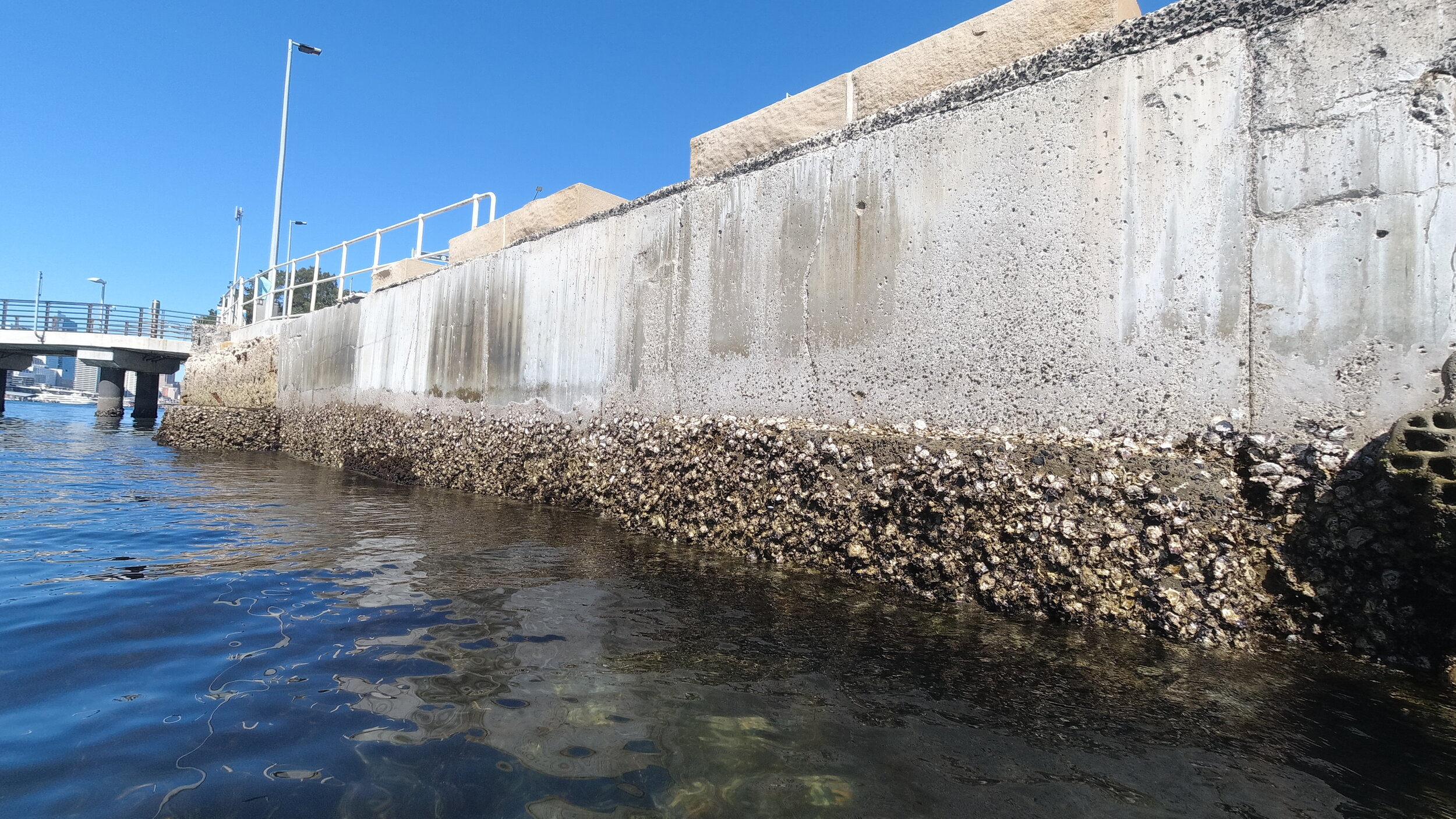
Our mission
Living Seawalls aims to revolutionise the way we think about building in the ocean. In order to improve the ecological sustainability of new and existing foreshore developments we must ensure that no new development proceeds without first considering how it can benefit both humans and nature. By combining ecological and engineering knowledge, Living Seawalls is committed to developing adaptable and affordable mechanisms to bring life back into marine developments across the world.
A growing footprint
The growing human population is rapidly increasing its environmental footprint in our oceans. This is in part due to a construction boom in our seas. Structures such as seawalls, pilings, pontoons and marinas are built for diverse purposes such as shoreline protection, recreational activities, energy generation and to facilitate communications. The global extent of these marine built structures is significant, cumulatively covering 32,000 km2. These structures impact the surrounding areas covering up to 3.4 million km2, an area bigger than the world’s mangrove forests and seagrass beds combined. In the United States alone, more than 50% of the natural shorelines have been replaced by seawalls, breakwaters and other artificial, hard structures. The number and size of these structures is rapidly increasing to meet global energy and food needs and to combat the threats of climate change and sea level rise to coastal populations.
Marine urban structures destroy and replace natural habitats, and can modify the surrounding sea-floor, often with negative consequences on biodiversity and the ecosystem services, on which humans rely, such as maintenance of clean water, carbon sequestration and fisheries production. In particular, the flat and featureless surfaces of marine constructions provide little space for marine plants and animals to live, and few protective refuges from predators and environmental stressors, driving this reduced diversity and favouring the presence of pest species.
Building a solution
Living Seawalls has shown that despite marine construction being a large part of the problem, it can also be part of the solution. By blending ecological concepts and engineering in creative design, our team is reviving our increasingly urbanised oceans through the development of an affordable, adaptable and scalable method of ecologically enhancing structures. Living Seawalls panels are designed to not only reduce the environmental impacts of the current ‘ocean sprawl’, but also benefit marine life, enhance awareness about the marine environment and contribute to clean oceans.
Living Seawalls is the result of more than 20 years of scientific research, done by ourselves and others. Based on this research, we have developed a modular system by which critical habitats for marine life can be added to marine constructions. Panels, mimicking the habitat features of natural shoreline ecosystems, such as rock pools and crevices, are fitted in scalable mosaics onto artificial structures. The complex panel surfaces increase the habitat area available for colonisation and growth of seaweeds, shellfish and other marine life. They also add protection to marine life from high temperatures and predators.
Critically, our panels can not only be incorporated into new structures, but also into the many existing structures that have modified our harbours, coastlines and oceans. For example, our initial Living Seawalls installations were retrofitted existing seawalls in Sydney Harbour, Australia, where more than 50% of its shoreline is modified by seawalls and other structures such as pilings. In areas with Living Seawalls, we have seen an increase of up to 36% in the number of fish, seaweeds and invertebrates.






